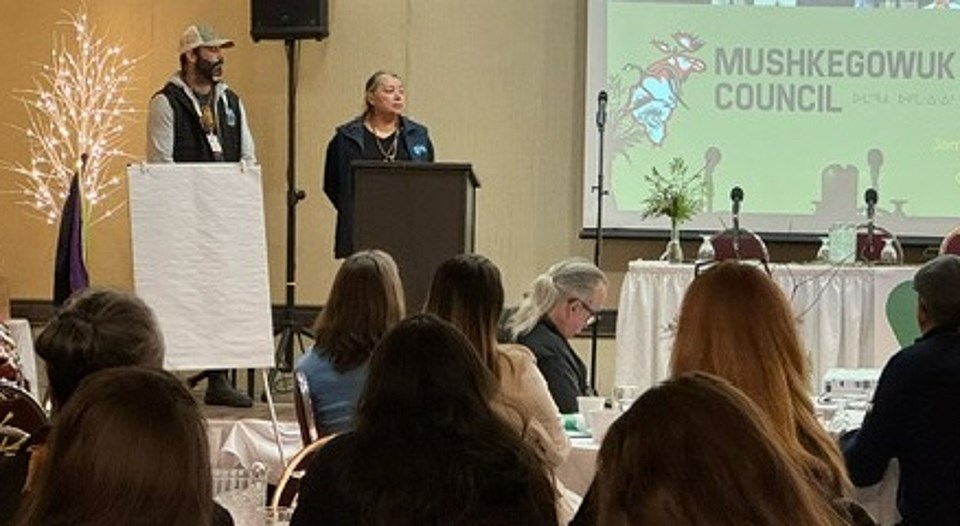A local organization is working to create an economy where industry and traditional values co-exist.
An update on a Mushkegowuk Council project working towards a conservation economy on the James Bay coast was one of the presentations at the second annual Indigenous Lands Symposium, presented by Wahkohtowin Development. The sold-out conference was held in Timmins Jan. 22-25.
The hope is for the Omushkego Wahkohtowin Project Finance for Permanence (PFP) to move into the next stage this summer.
“As far as next steps, a lot of it is engaging more and more with Ontario,” said Troy Woodhouse, assistant terrestrial region manager with Mushkegowuk Land and Resources. “We’re just in the preliminary stages of chatting with them, and a lot of that will hinge on what they want.”
The PFP focuses on protecting marine and lowland areas of the Hudson and James Bay region. Those lowlands are the second largest carbon sink on the planet, storing more than 30 million tonnes of carbon. The wetlands also act as a filter for the rivers in the area.
A conservation economy focuses on industries that allow communities to maintain traditional values while still engaging in economic growth, like ecotourism, fisheries, and small-scale logging.
A PFP model promotes local conservation efforts, sharing unique experiences, and building a conservation-based economy through long-term initiatives. The funding through non-profit and government organizations can help with infrastructure, housing, and employment for residents in the area. The first of these projects was the Great Bear Rainforest PFP in northern British Columbia.
The Great Bear Rainforest PFP has created 1,200 new jobs and supported 130 new businesses.
The federal government announced $800 million in funding for four PFP projects across the country in 2022.
“The hope is to get that split four ways, with $200 million, but we don’t know how that’s going to work out yet,” said Woodhouse.
Because the forestry and mining industries are involved, Woodhouse said the provincial government is an important part of the project's success.
“They’re open for business, they have ambitious plans in the critical mineral sector, and we want to share our vision with them,” he said. “Conservation does lend to opportunities for development, too. Mining and conservation can work hand in hand.”
Mushkegowuk Council’s Land and Resources department aims to negotiate the PFP deal details with the federal government by this summer.
While it’s not clear how the province will be involved in the project, Ontario could act as a positive example if the province works with the project, said Woodhouse.
“What better story than to say, look at Ontario, we have a great mineral industry, but we also have a great conservation economy, so I think it’s finding that balance that community members always talk about,” said Woodhouse.
Mushkegowuk Council has been working for years to protect the waters and lands around James Bay and Hudson Bay, including signing a memorandum of understanding with Parks Canada to launch a feasibility study to create a National Marine Conservation Area (NMCA) in 2021.
The NMCA is a separate project with similar goals to the PFP plans.
— TimminsToday




